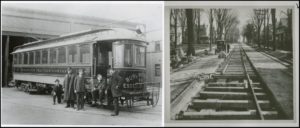 Kit Houses
Kit Houses
BVT Block 2
The decades leading up to the arrival of kit houses in Burlington were characterized by a growing population and economy. The population of Burlington grew from 18,640 in the 1900 U.S. Census to 27,686 in the 1940 U.S. Census—an increase of 49 percent over 40 years. During this same period, the total taxable wealth in Burlington grew by over one hundred percent, while the per capita wealth grew by less than fifty percent. That the total taxable wealth grew at double the rate of the population and per capita wealth suggests the emergence of Burlington’s middle class.
This period in the city is distinguished by a shift from lumber and textile manufacturing businesses to service and professional occupations. A survey of some of the first kit houses reveals occupants working as dressmakers, carpenters, gardeners, and electricians, as well as physicians and dentists, business managers, and retail owners.

With higher wages, more people were able to buy houses on the outskirts of the city, escaping the congestion and grime while enjoying an easy ride on the streetcar into the city center for work, shopping, and entertainment. By the 1920s, Burlington Traction Company streetcar lines extended along Pine Street, North and South Winooski Avenue, Pearl Street, and North Avenue. Lines that followed Shelburne Street and Flynn Avenue encouraged the development of nearby neighborhoods during this period.